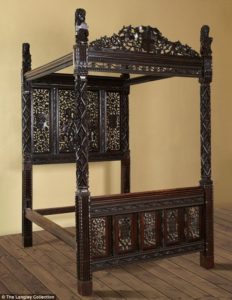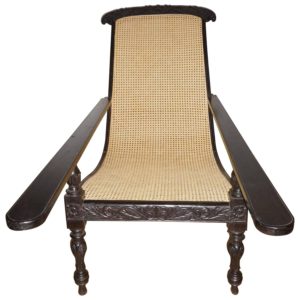You are out shopping for antiques for a magnificent living room, and you spot a piece of furniture that looks like it once graced an 18th century palace. You approach it with high expectations, and immediately the sales person exclaims, “This is original antique piece, madam! For you, very low price!” However, a closer inspection of the piece reveals a fake paint job and other inadequate attempts to hide the poor craftsmanship on this furniture that was perhaps created in a dingy woodwork garage a couple of decades ago. Once again, the free and loose use of the word ‘antique’ grates on your nerve. Familiar scenario?
Buyers and sellers of any dated furniture, household objects, clothes etc. have been using words like ‘antique’, ‘vintage’, ‘retro’ and other synonyms for ages, without realizing what they actually mean. So much so that these words have all blended into an ambiguous, musty image that just means “really old”!
What do these words mean, though?
First of all, we can all agree that ‘antique’ and ‘vintage’ definitely does not mean ‘old’ and ‘used’. Remember that the furniture, rugs, lighting and artwork that you purchase for your home, all have historical timelines and usually fall into definite time periods based on when they were created. Something old, if labelled as ‘antique’ or ‘vintage’ automatically implies added value. However, if the item does not hold up to the yardstick that these terms pose, that would be truly unlawful.
In this article, we attempt to determine what the terms ‘antique’ and ‘vintage’ mean, according to industry standards.
Antique
According to the Merriam Webster dictionary, an antique is a “relic or object of ancient times” or “a work of art, piece of furniture, or decorative object made at an earlier period and according to various customs laws at least 100 years ago.” Ruby Lane, an online marketplace of independent antique and collectible shops, corroborates this definition, going so far as to add, “If an item is not definitively datable to 100 or more years in age, it should not be directly referred to as an antique”.
Antique items are those items that are desired by collectors for their age, beauty, rarity, condition, utility, history or personal stories and other unique features. More importantly, an item that is labelled as ‘antique’ should also exhibit some degree of exceptional craftsmanship. A badly thrown-together creaky chair just won’t make the cut!
In various countries, there are strict laws that regulate the buying, selling and the shipping of such ‘antique’ items. In particular, the United States has the 1930 Smoot-Hawley Tariff Act, which defines antique as: “… works of art (except rugs and carpets made after the year 1700), collections in illustration of the progress of the arts, works in bronze, marble, terra cotta, parian, pottery, or porcelain, artistic antiquities and objects or ornamental character or educational value which shall have been produced prior to the year 1830.” Therefore these laws helped people to distinguish clearly between genuine antique pieces, vintage items and collectible objects. U.S. Laws regarding antiques also add that, with regards to quality, an item must retain almost all of its original character, and be less than 50% restored to be considered an antique. It also says that some experts may say that ‘antique’ could date back to 80 years, with the understanding being that it has passed through two generations, assuming one generation stretches for 40 years.
Indian laws on antiques are pretty much identical to the laws mentioned above, stressing on ‘100 years or more’ being a definitive criterion. For more information, read up on The Antiquities and Art Treasures Act of 1972, and The Antiquities and Art Treasures Rules of 1973, which fall within the purview of the Archaeological Survey of India, Ministry of Culture.

Vintage
Although most people assume that the words ‘vintage’ and ‘antique’ are interchangeable, there are some clear distinctions that one must take into account, especially from a legal point of view. Merriam Webster dictionary defines ‘vintage’ as “a period of origin or manufacture” or “length of existence: age”. This word is a derivative of the French word vendage, which means “the grapes picked during a season.” ‘Vintage’ was formerly a term that was exclusive to the dating of wine. However, gradually it came to be associated with other items too, and ‘vintage’ came to be regarded as any item from the past, which was of high quality, denotative of the best of the era.
Ruby Lane offers a clearer description thus: “… For the term vintage to accurately apply to it, an item should be somewhat representational and recognizable as belonging to the era in which it was made.” In this vein, a ‘vintage’ item should be no less than 20 years of age. Somewhere between 50 to 80 years is ideal.
Technically, when an item is labelled as ‘vintage’, the year of creation should be specified. However, some items simply leave out the year, as their design or certain features may be self-explanatory of the era to which they belong. For instance, an ebony wood lounging chair, with long armrests would immediately suggest 19th century Indian homes, where the man of the house or perhaps senior members reclined. The criteria that experts stress upon is that a vintage item should be extremely well-made with keen attention to detail, should have crossed generations, and should preferably have an interesting story.

Antiques and vintage-shopping can be fun, and can result in fabulous purchases that lend grace and intrigue to your interiors, if done the right way. Read more about antiques and vintage items, and also familiarize yourself with other terms like ‘retro’, ‘modern’ etc. so that you have a better understanding of descriptions. Also, remember that there is a fine line between a tastefully designed home and a museum of historical artefacts! Happy antiquing
Image courtesy
Image 1- https://antiquewarehouse.ca
Image 2 – https://www.1stdibs.com
